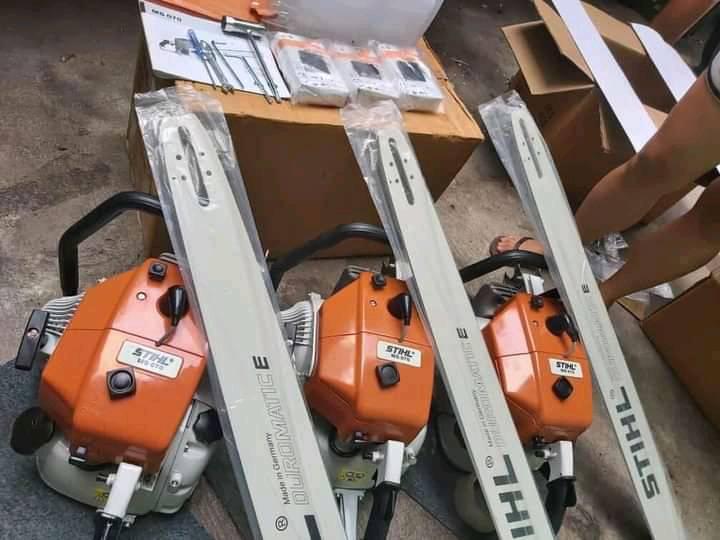
Do you know who is the underlying hero of your chainsaw? Yes, you are right. The chainsaw bar is the hero that steers most of the cutting attempts of logs into small pieces. If you are a new user of the chainsaw, you need to know the most appropriate time to replace your chainsaw bar. Otherwise, you will lose the ability of your chainsaw bar to cut the logs efficiently or accurately. For this reason, we will let you know when to replace a chainsaw bar.
When to replace a chainsaw bar: Full explanation
A damaged or worn-out bar won’t give you the best result of cutting logs. It may take much time to accomplish a cut than it used to take before. Besides, it is happening, though the chain of your saw is sharp enough to do its job. Therefore, you should go for some checks that will tell you whether it is time to replace your chainsaw bar.
Chain tension check
Typically, a chainsaw bar is ‘U’ shaped. Excessive wearing of the bar may cause a transition of the bar into a ‘V’ shape. You may ask for the problem of being a ‘V’ shape of a chainsaw bar. Of course, it’s not healthy for a chainsaw bar. This shape helps the chain to move sideways more frequently. Now, wiggle the chain on the bar sideways. If it often moves with ease, it’s time to bid goodbye to your chainsaw bar. Otherwise, it is good enough to perform.
| Preview | Product | Rating | |
|---|---|---|---|

|
Husqvarna HLN250 18-Inch Laminated Chainsaw Bar, .325" Pitch... | Check Price on Amazon |
Straight edge check
You may find some new chains also moving a bit. So, the previous test may create a vague idea for you. You will get the idea of a worn-out chainsaw bar through the straight edge method of testing a worn-out bar. Press a scale or pencil against any side of the bar and one of the chain’s teeth facing outside. What can you see? Can you see any gap between the scale and the side of the bar? If you can, then you need not replace it. On the other hand, the absence of a gap between the scale and the bar’s side indicates your chainsaw bar’s immediate replacement.
No products found.
Bent bar check
Despite being a solid material, there remains a likelihood of bending the chainsaw bar due to excessive load. You will feel a lack of efficiency if your chainsaw bar becomes damaged or bent. It may happen due to several causes, but the chain’s loosening and insufficient lubrication are noticeable. So, you need to check your chainsaw bar carefully. Check for any evident signs of damage on the bar after removing the chain from it. If your chainsaw bar passes this check successfully, keep the bar at your eye level to observe any damages or bents. If any, repair it with a rubber mallet.* By the way, the replacement of the bar is the best option in this case.
Cracked bar rails check
Any crack in the chainsaw bar rail can hamper your cuts. So, checking bar rail cracks is necessary. The chance of cracks in the bar rail increases when the bar of the chainsaw is also bent. It is better to replace the chainsaw bar if there is any crack in the bar. You can repair it, but replacement is recommendable.
Pinched rails check
Is the rail in your chainsaw bar getting narrower in any area of the bar rail? If it is, there may be a pinch in the bar rail. The pinch in the bar rail may create excessive heat due to the chain’s friction with the pinched point of the bar rail. Again, the chain may get stuck abruptly due to the pinch in the bar rail. You may stay calm as you can repair it with a flat head screwdriver.
Twisted bar check
Sometimes, you may find your chainsaw bar twisted. When one side of a bar is bent a bit more than the other side of the bar, it is called a twisted bar. It is quite tough to repair a twisted chainsaw bar. It will be reasonable to replace the bar to get better performance of the chainsaw.
Nose sprocket check
You should check the nose sprocket attached to the front side of the bar. It is another crucial part of a chainsaw bar. It makes the moving of the chain around its teeth very smooth. Moreover, it may find broken due to the lack of proper lubrication. If it doesn’t get enough lubrication, it may lose its teeth due to the chain’s friction creating overheating. In this circumstance, you can attach another replaceable nose sprocket if possible. Otherwise, the only way to solve the problem is to replace your chainsaw bar.
Conclusion
Our little endeavor was to help you by explaining the facts of when to replace a chainsaw bar. Now, you have the ability to find out the exact time of replacing your chain saw bar. So, check the mentioned procedures and take steps if necessary.
What is the best 2 stroke oil for chainsaws?
Last Updated on January 31, 2022 by John G. Anderson
Contents
